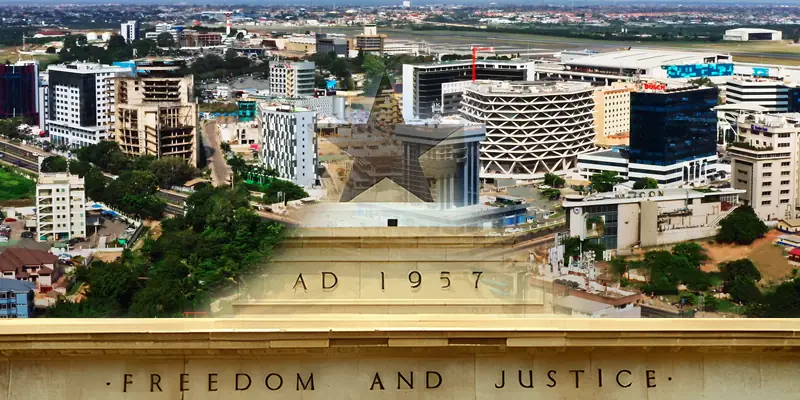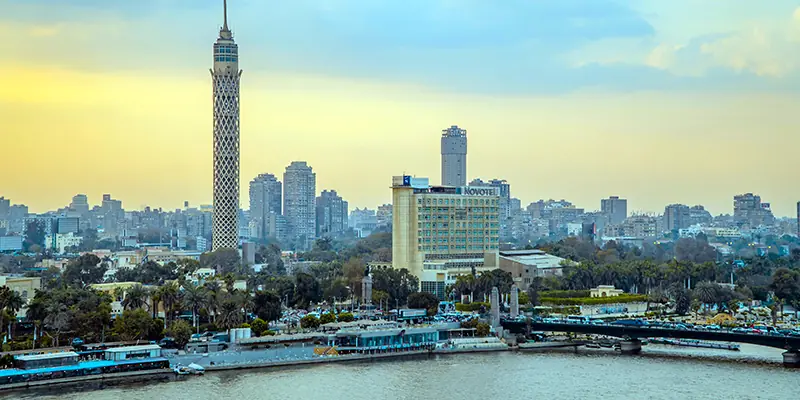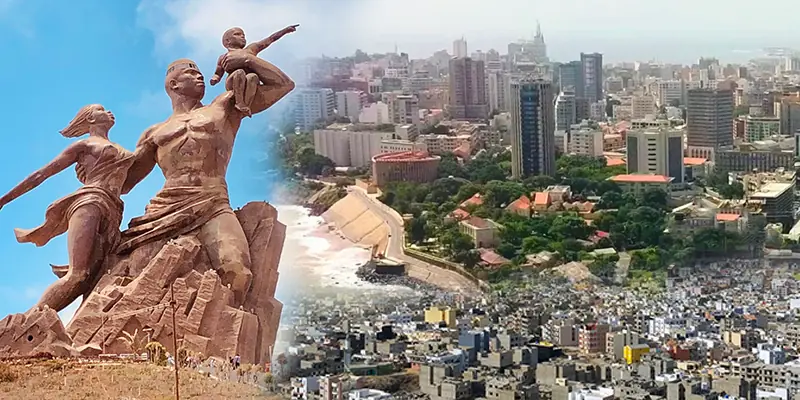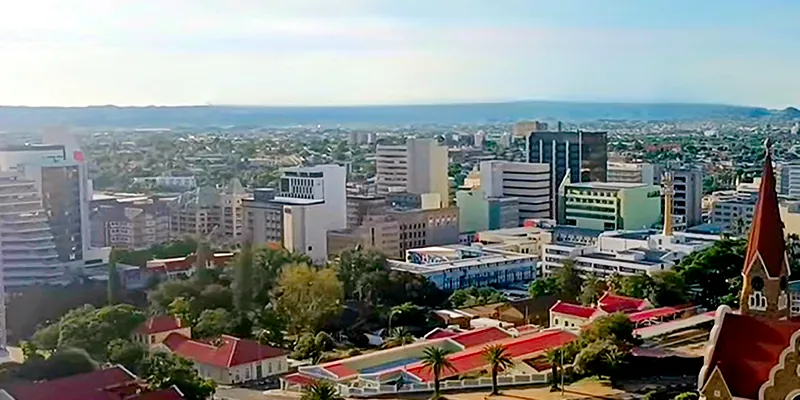African Travel and Tourism
African Metropolises on the Rise
African metropolises on the rise are reclaiming their rightful place as thriving centers of economic growth, cultural fusion, and innovative technologies. Forget about dusty roads and limited opportunities; cities throughout Africa offer a wealth of experiences for tourists as well as residents. Explore bustling markets with vibrant colors and diverse cultures right next to world-class museums and iconic landmarks that showcase the continent’s rich history. Lagos, Nigeria’s energy is contagious, Johannesburg, South Africa’s history is captivating, and each city offers a distinct blend of old and new, where tradition merges seamlessly with modern life. This is the new Africa and its future, an intersection of historical significance and welcoming modern architectural development. Pack your bags and journey to these growing African metropolises on the rise.
A metropolis is a large city or conurbation which is a significant economic, political, and cultural area for a country or region, and an important hub for regional or international connections, commerce, and communications. (Wikipedia, n.d.)
Table of Contents
Abidjan, Côte d’Ivoire (Ivory Coast)
Abidjan Population: 5.6 Million (Est. 2023)
Abidjan, with its breathtaking tropical coastline, is the economic hub of Côte d’Ivoire and among the most diverse cities in West Africa. Originally a modest fishing village, Abidjan has grown into a dynamic urban center with skyscrapers, a well-developed transportation system, and a vibrant cultural landscape reflecting its various cultures over the past century.

Abidjan, as an emerging African metropolis, has all the excitement and possibility that come with rapid growth. The business center is filled with new buildings intended for foreign investors and global corporations. Trendy restaurants, nightlife venues, and retail malls, complemented by open-air markets and maquis (street sellers), give residents and visitors everything they need. While the economic gaps remain in many places, the city is continuing to modernize. Visitors and locals will find a young population with the optimism of a city moving forward with the promise of 21st-century Africa.
Accra, Ghana
Accra Population: 2.6 Million (Est. 2023)
Accra, Ghana is steadily progressing towards becoming a vibrant African metropolis thanks to the improvement of infrastructure and economic stability. The city established the foundation for many different types of cultures to coexist peacefully. Its modern avenues, with glass highrises intertwined with traditional Ghanaian neighborhoods, reflect the country’s global 21st-century ambitions. Furthermore, innovators and entrepreneurs have contributed to a startup culture in areas ranging from cocoa manufacturing to technology.

Visitors are greeted with a welcoming atmosphere. The city is alive with bustling markets, a thriving music scene, and vibrant street art and life. The spirit of this city and nation is one that has triumphed over historical adversity. Furthermore, Accra is succeeding in balancing cultural preservation with global integration through strategic development. Finally, Accra accepts its role as an intersection that connects African heritage and innovation with the aim to propel West Africa to greater prosperity.
Addis Ababa, Ethiopia
Addis Ababa Population: 5.4 Million (Est. 2023)
Addis Ababa, sometimes known as “Africa’s Capital” or “Sheba Valley,” is a flourishing city where history and modern innovation merge. This expanding African metropolis is a cultural melting pot, making it a wonderful area to live and do business. Furthermore, Addis Abeba, from the ancient cathedrals of Lalibela to the Merkato market, provides a look into Ethiopia’s rich history and future prosperity.

Ethiopia has invested in roads, schools, hospitals, and ways to increase residents’ access to energy and water. Additionally, a boom in commerce and business startups is providing jobs and contributing to Addis Ababa’s steady growth. Moreover, a prime example of its tech innovation is the assistive technology advancements, such as the local RIDE ridesharing service that makes it easier for people to travel around the busy city. As the city works hard to modernize and educate its people, visitors and residents will find a blend of both ancient culture and cutting-edge technology in Addis Ababa.
Cairo, Egypt
Cairo Population: 22.1 Million (Est. 2023)
Cairo is perfectly positioned in northern Egypt alongside the Nile River. The Cairo Tower, the Saladin Citadel, and the Egyptian Museum are among the city’s many architectural icons. Furthermore, the museum houses a large collection of ancient artifacts from the famed Ancient Egyptians, not to be mistaken with Egypt, the current modern Arab state. Within a short distance, one can visit the legendary Giza Pyramids, an ancient Egyptian engineering marvel. These characteristics contribute to the intriguing city’s unique blend of ancient Egyptian history and present traditional and modern Arabic culture.

The city’s essential position as a regional political and economic center extends back centuries. Cairo is a wonderful place to visit. Egypt comprises multiple cultures, but the Arabic cultures are currently the most prominent in the city of Cairo. Anyone visiting this growing African metropolis will be able to experience Ancient Egypt while enjoying modern Cairo’s amenities. Cairo deserves its spot on our list of African metropolises on the rise.
Casablanca, Morocco
Casablanca Population: 3.9 Million (Est. 2023)
Casablanca, the largest city in Morocco, situated on its Atlantic coast, has transformed from a small harbor town to become the center for trade and business in the country. Casablanca was formerly a French colonial port that quickly developed into a prosperous center of trade and business. Today, the city’s skyline reflects a blend of old and new, between modern financial high-rises and 1920s Art Deco buildings.

Beyond Casablanca’s shiny office towers are the historic Old Medina districts, Arabian souks, and Nouvelle Ville neighborhoods packed with traders and open-air marketplaces welcoming all visitors. Wandering the busy streets lined with vendors, restaurants, and cafés is a great way to immerse yourself in the local culture, which has been influenced by centuries of cultural exchanges between Berber, Arab, and French people. Casablanca prospers as Morocco’s cosmopolitan gateway city. Furthermore, its people are hospitable and welcoming, adapting to new ideas against the backdrop of historic customs. As this African metropolis grows economically, entrepreneurs and innovators are drawn to it.
Dakar, Senegal
Dakar Population: 3.4 Million (Est. 2023)
Dakar, Senegal’s capital, is situated along the Atlantic Ocean of Western Africa. This city is known for many things among these are its beautiful beaches, Sandaga market and the magnificent African Renaissance Monument, which overlooks the sea. Dakar is the political and economic center in Senegal. Above all, the city is committed to sustainable infrastructure development.

The present day Dakar’s architecture is a combination of traditional and contemporary styles. There are modern buildings and neighborhoods downtown. Residents and visitors can enjoy open marketplaces and traditional crafts from indigenous communities such as the Wolof and Fula. Visitors can sample Senegalese delicious foods that combine aspects of the country’s diverse cultures. Musical clubs known for Cuban-African rhythms can be found in the old city. New technology companies are also transforming Dakar into an innovation hotspot. As with many African metropolises on the rise has some issues to overcome, the city is still improving on a daily basis.
Johannesburg, South Africa
Johannesburg Population: 6.1 Million (Est. 2023)
Johannesburg, often called “Joburg” or “Jozi,” is the soul of South Africa. This vibrant city, once a small gold mining town, has transformed into a metropolis of energy and diversity. The skyline boasts towering skyscrapers alongside historical landmarks like the iconic Soweto township. The streets of downtown Johannesburg are lined with office buildings, malls, shops, cafes, restaurants, and markets with handcrafted souvenirs.

Explore the world-class museums and art galleries. The Apartheid Museum is a noteworthy museum to visit because it highlights the city’s history. We can’t review Joburg without mentioning Soweto’s amazing history, culture, lively bars, and restaurants. The nightlife throughout the city offers a choice for almost everyone, from luxury rooftop bars with panoramic views to smaller local restaurants or lounges. Johannesburg is also a major economic center for businesses and entrepreneurs from across the globe. Johannesburg has something for everyone, whether you’re a history fan, a tech enthusiast, or just looking for a unique travel experience.
Kampala, Uganda
Kampala Population: 3.8 Million (Est. 2023)
Kampala, also known as ‘The City of Seven Hills,’ is the capital of Uganda. The city’s residents are known for being welcoming and it offers many different activities. After exploring landmarks like the Kasubi Tombs or the Uganda Museum, unwind in the friendly environment of local marketplaces and eateries. The city’s strategic location near Lake Victoria enhances its appeal and offers opportunities for lakeside recreation. Additionally, Kampala is the center of political and economic development in Uganda.

The continuous development of the city is visible in its historical architecture and expanding modern urban areas. People can connect with Kampala’s cultural offerings while also experiencing changes in its evolving economic and technological environment. Finally, Kampala is one of the African metropolises on the rise with the most potential and is worth visiting.
Kigali, Rwanda
Kigali Population: 1.2 Million (Est. 2023)
Kigali, Rwanda’s capital, is centrally located within the country. The city’s phoenix-like rise from tragedy to prosperity reflects Rwanda’s commitment to growth and resilience in the aftermath of a traumatic history. The city is known for its cleanliness, hills, and well-maintained streets. Kigali provides a serene atmosphere with modern infrastructure infused with cultural elements. Notable landmarks, such as the Kigali Genocide Memorial, offer a somber yet important reflection on Rwanda’s past.

The city is the economic and political powerhouse of Rwanda. Kigali stands apart by its emphasis on sustainable development and innovation in urban planning. The city maintains a consistent focus on cleanliness and sustainable growth, creating a welcoming environment. Kigali’s commitment to innovation as a political and economic center shapes its evolving image. This city, like the rest of the country, has a lot to be thankful for and proud of.
Lagos, Nigeria
Lagos Population: 15.9 Million (Est. 2023)
Lagos is the capital of Nigeria. One of Africa’s most populous cities is also sometimes referred to as the “beating heart of West Africa.” The busy marketplaces are both lively and culturally diverse. From the business district to the bars and restaurants, Lagos combines modern and traditional characteristics. Nigeria is poised to become a leading African technology hub, thanks to its young population, thriving tech scene, and entrepreneurial spirit.

Lagos is home to an increasing number of startups and tech titans that are innovating in fields such as finance, agriculture, and healthcare. Immerse yourself in the heart of a global player, where skyscrapers are beginning to soar and dreams are possible. The city transforms as the sun sets, inviting you to explore the vibrant nightlife of Lekki. Enjoy the rhythms of Nigerian music throughout the entertainment areas, as well as the culinary creations from local restaurants.
Luanda, Angola
Luanda Population: 9.2 Million (Est. 2023)
Luanda, Angola’s capital and largest city, is a fast growing metropolis. The city emerged in the 1500s as a Portuguese colonial outpost for the slave trade. Luanda thereafter grew rapidly, eventually becoming Angola’s capital city following independence in 1975. Decades of civil war badly harmed the city and nation, but millions of people now live in Luanda and its surrounding areas. Roads, homes, schools, and hospitals continue to be improved through development initiatives.

You should visit the buzzing marketplaces, the Fortress of So Miguel, and the beaches of Ilha de Luanda whether you’re a resident or a visitor. Today, high-rise offices and residences dot its shoreline. Enjoy a bite of the amazing Angolan cuisine, stroll along the waterfront, or have an unforgettable night out. Take a tour through the flora at the Botanical Garden or climb the Morro da Lua for spectacular views. Luanda has a lot to offer, and as this African metropolis grows, it becomes even more appealing.
Maputo, Mozambique
Maputo Population: 1.1 Million (Est. 2023)
Maputo, Mozambique’s capital city, is located on the country’s southernmost tip. It began in the 1500s as a Portuguese fort named Lourenço Marques. Following independence in 1975, the city was renamed Maputo and designated as the capital. Today, over one million people reside in Maputo. The city’s architecture is a mix of colonial and contemporary, reflecting its historical background and its present-day development. The Maputo Central Railway Station and Independence Square are notable landmarks.

Maputo’s development was hampered by decades of civil war and poverty until the 2000s. Financial skyscrapers, hotels, and shopping malls are now appearing across the city. Maputo has a unique coastal charm, with its palm-lined avenues and ocean-facing promenades adding to its laid-back atmosphere. Enjoy delicious seafood dishes at seaside eateries, listen to live music vibrating from local bars, or explore the city’s dynamic nightlife scene. The future of Maputo as a growing African metropolis rests on both inclusive economic growth and security.
Nairobi, Kenya
Nairobi Population: 5.3 Million (Est. 2023)
Kenya’s capital city, Nairobi, is situated in the southern region of the country. Nairobi began as a small railroad depot under British colonization in the 1890s. It developed into a significant commercial center, and Kenya kept it as its capital following independence. The city is one of Kenya’s most important political and economic regions. Nairobi is renowned for having a wide range of neighborhoods, from residential to business sectors. Among the notable sites is Nairobi National Park, which provides a singular opportunity to see animals in an urban setting.

Nairobi, in addition to its economic importance, acts as an East African gateway for education and healthcare. The city is home to a number of educational institutions and medical facilities, which contribute to its regional significance. Modern high-rises dot the cityscape as one of the East African leaders in finance, media, and trade. Nonetheless, areas of opportunity exist, such as the booming technology industry. Nairobi continues to be East Africa’s most globally connected metropolis, attracting international corporations interested in its stability and skilled workforce. Certainly you would agree that Nairobi is an African metropolises on the rise and also deserves its spot on this list.
Tunis, Tunisia
Tunis Population: 12.5 Million (Est. 2023)
Tunis, Tunisia’s capital, is located on the country’s northeastern coast. As the city’s political and economic core, it has a combination of modern buildings and cultural landmarks. The main boulevard Avenue Habib Bourguiba is a focal point for retail and entertainment, highlighting the city’s modern metropolitan identity.

The Medina, a UNESCO World Heritage site noted for its historical buildings and exciting markets, is a must-see. Tunis also has the Bardo National Museum, which houses a large collection of Tunisian antiques and mosaics. The city’s coastline setting and Mediterranean influence add to its appeal providing visitors with a healthy blend of history and contemporary living.
Windhoek, Namibia
Windhoek Population: 477,000 Thousand (Est. 2023)
Windhoek, Namibia’s capital city, combines modern conveniences with stunning landscapes. Explore the colorful streets lined with charming architecture. Windhoek’s well-kept infrastructure, which includes a mix of residential and commercial areas, aids in its organization. The Independence Memorial Museum and the historic Lutheran church Christuskirche are both popular tourist attractions.

Immerse yourself in the Craft Market’s colorful atmosphere, where friendly vendors sell handcrafted items and traditional Namibian textiles and apparel. The tranquil surroundings of the city, as well as the presence of parks such as Zoo Park, create a pleasant environment for residents and visitors. Finally, being Namibia’s political and economic core, the city provides facilities and cultural opportunities for all.
Conclusion
To conclude, cities throughout Africa are embracing the future and transforming themselves. From the lush landscape of Nairobi to the modern architecture of Kigali, each metropolis has its own distinct personality, cultural experiences, and significance in history. Additionally, cities are also rapidly growing and developing, adding to the continent’s diverse urban landscape. Though challenges remain, African creativity and resilience are fueling positive change and paving the way for a brighter future. Furthermore, those seeking an authentic and transformative travel experience will leave with unforgettable memories and a better understanding of Africa’s remarkable present and promising future. All these cites earned their place on this list of African metropolises on the rise. Without delay and as we stated at the beginning, pack your bags!
